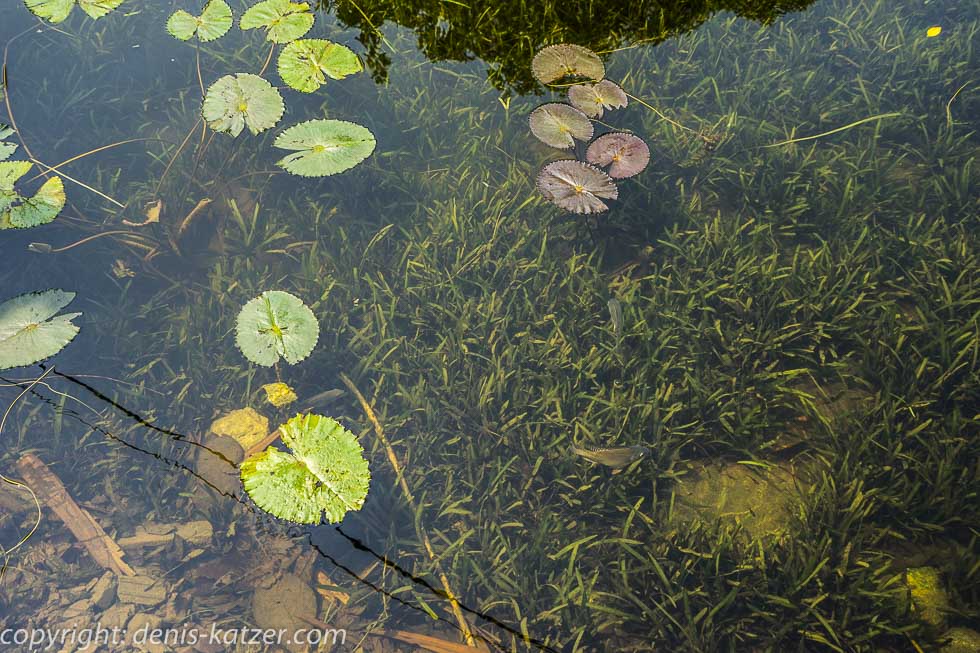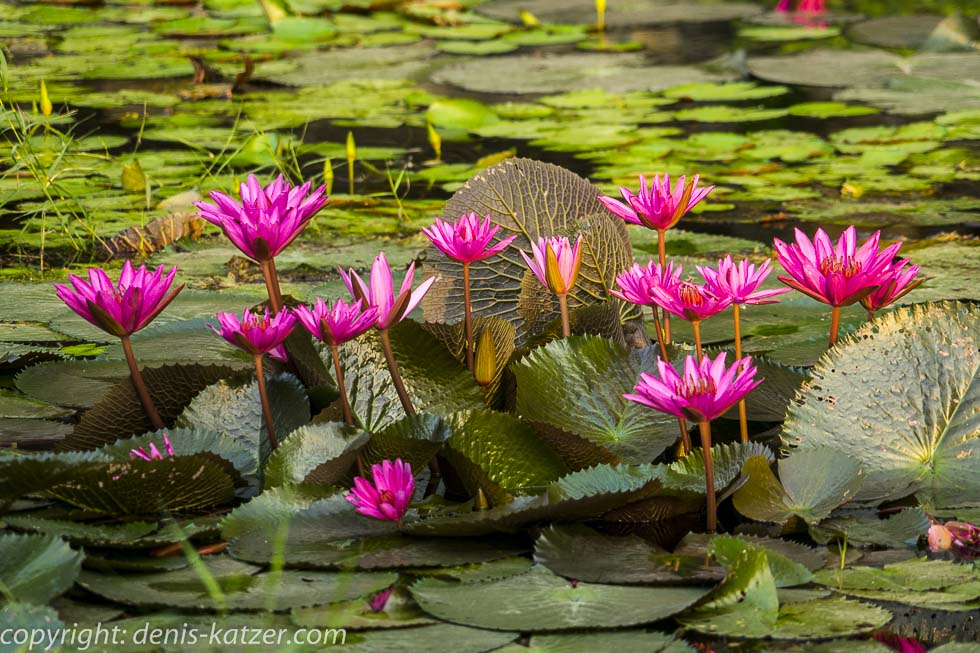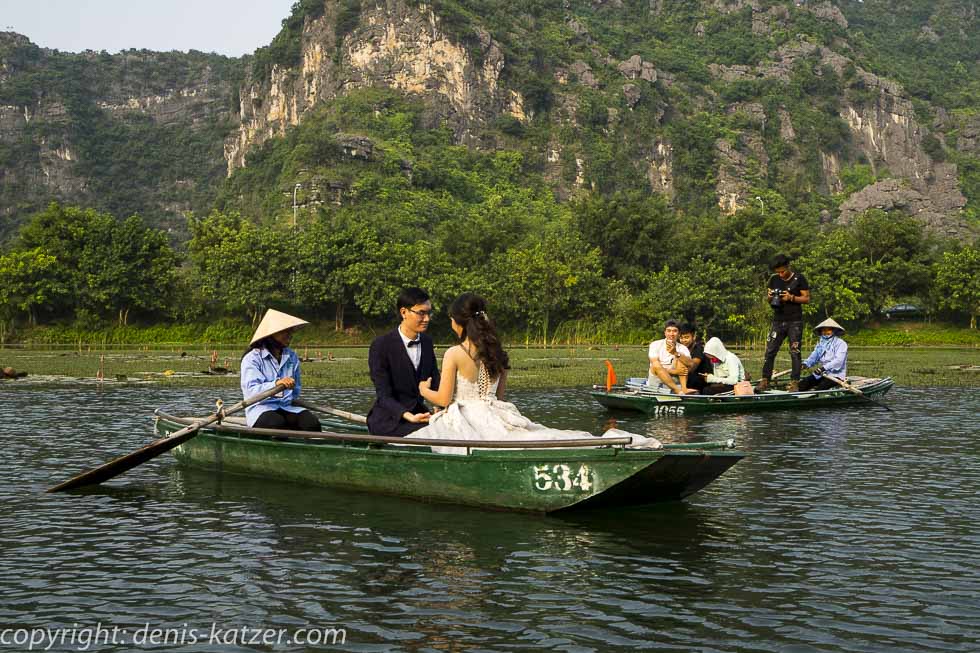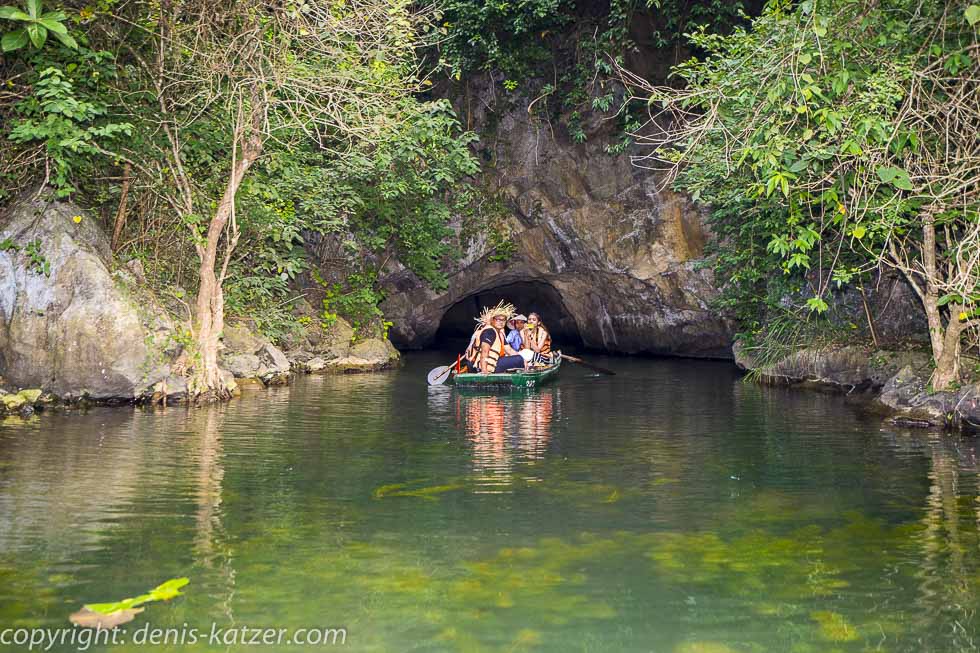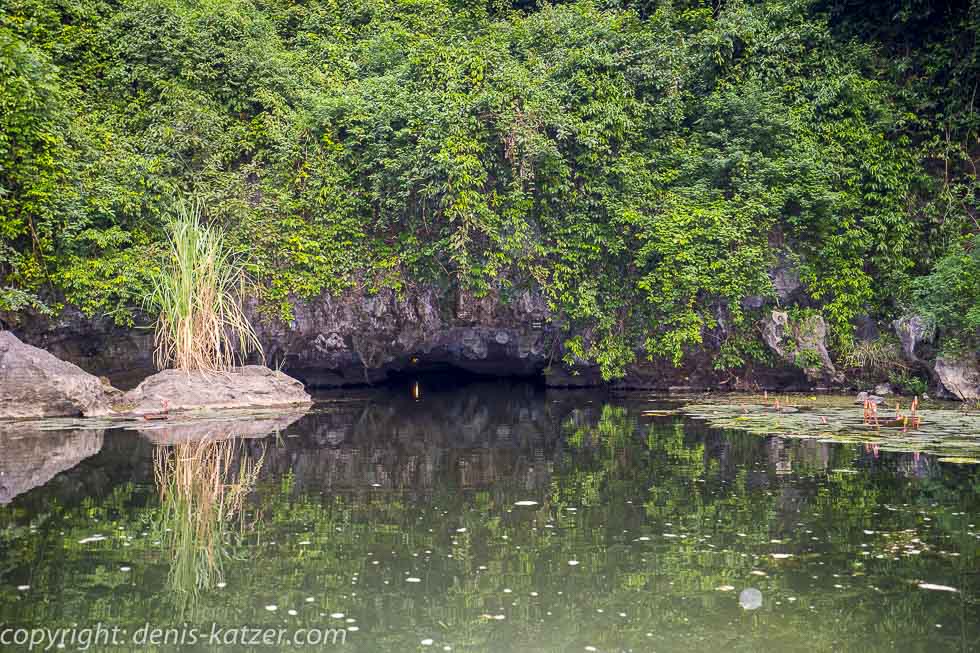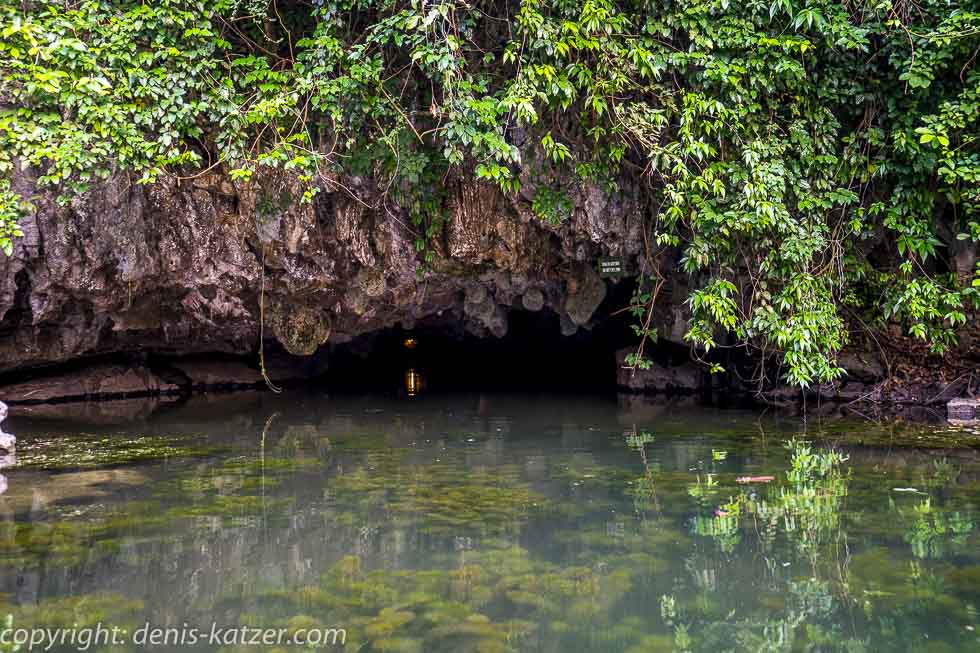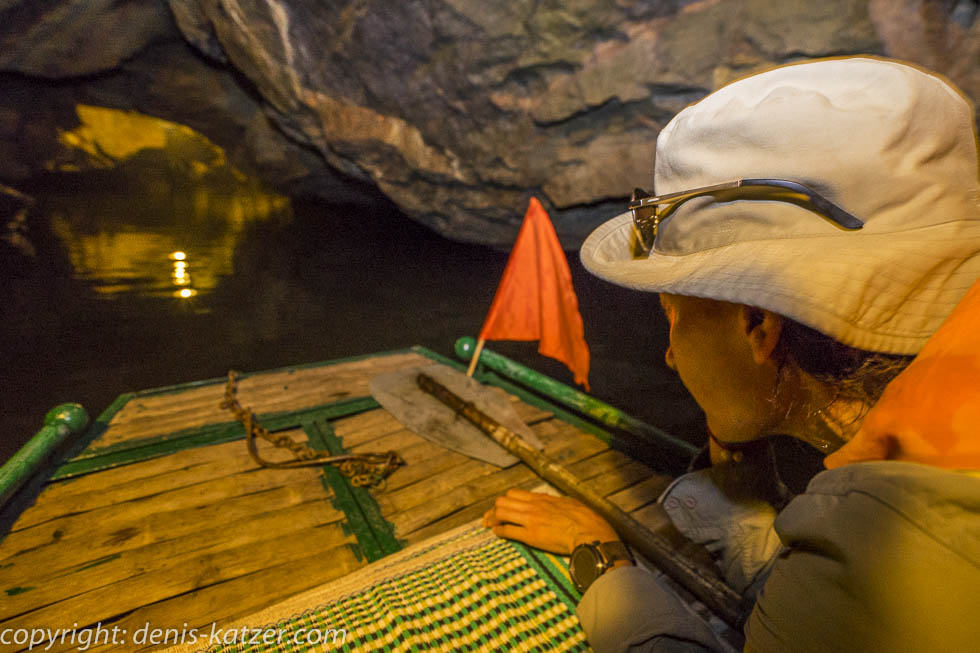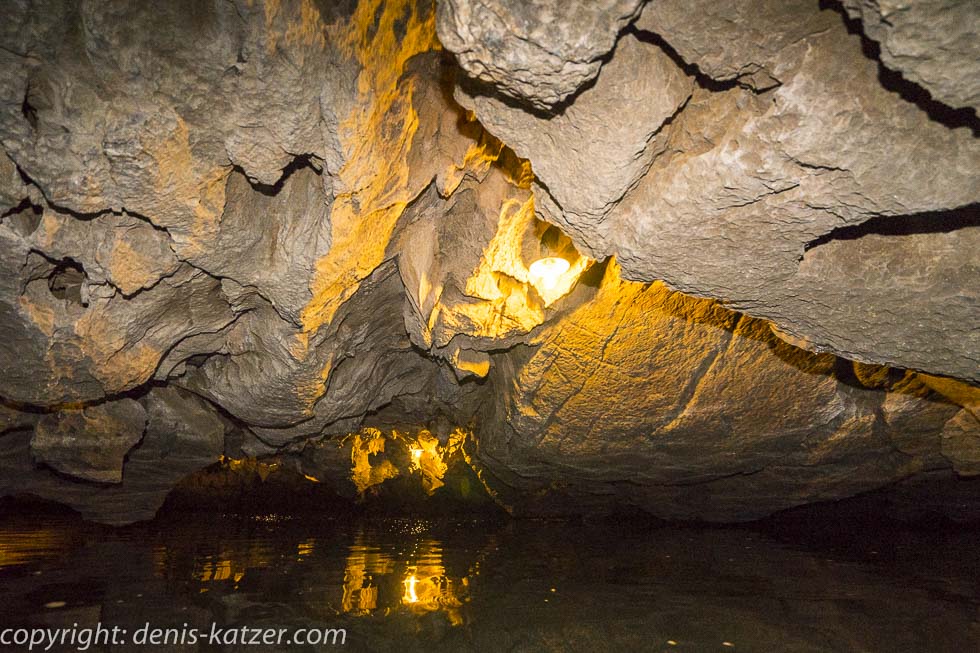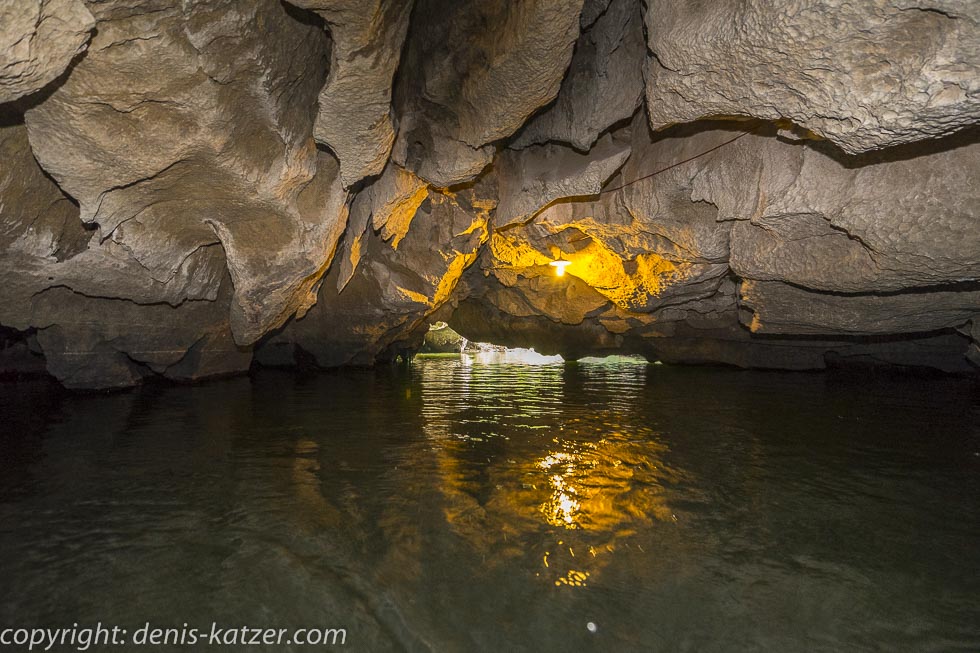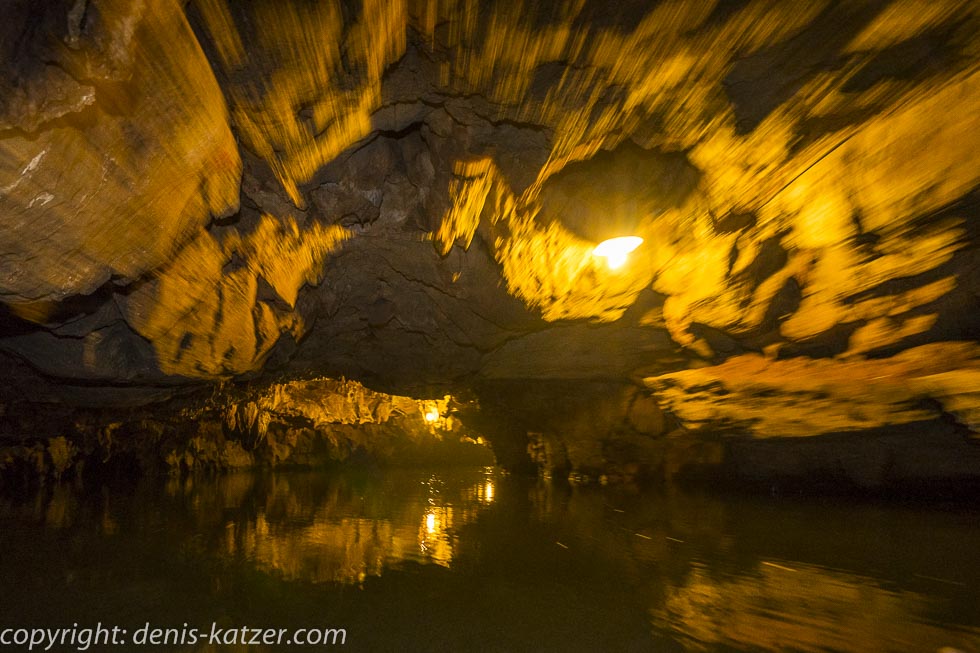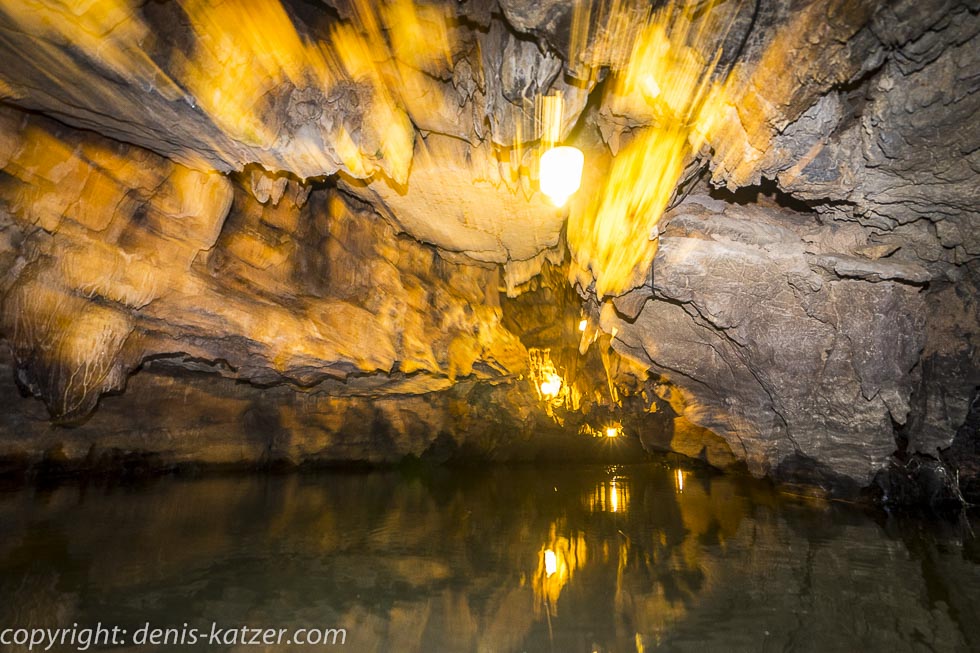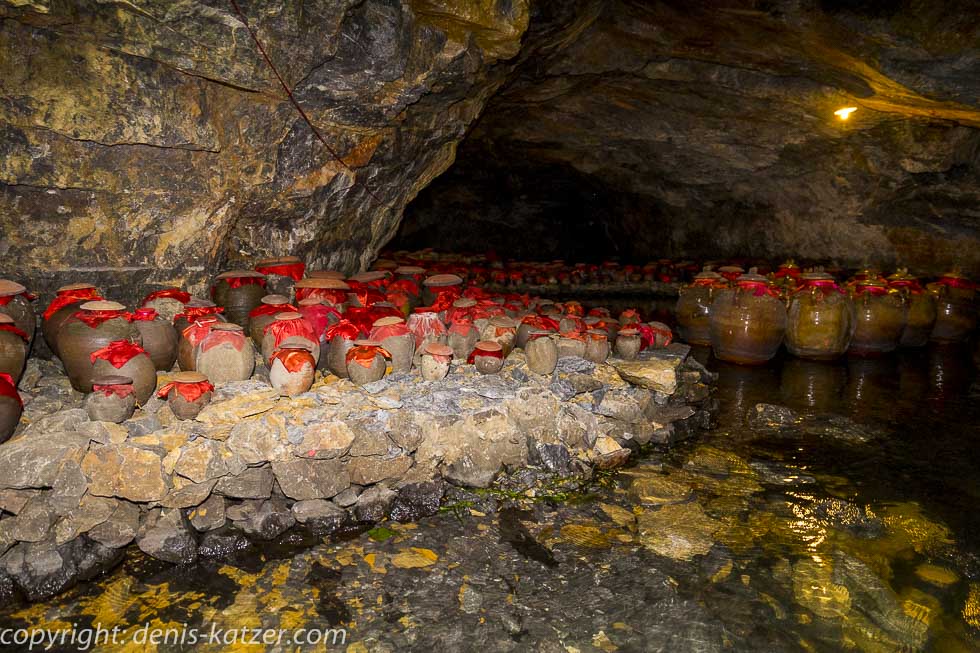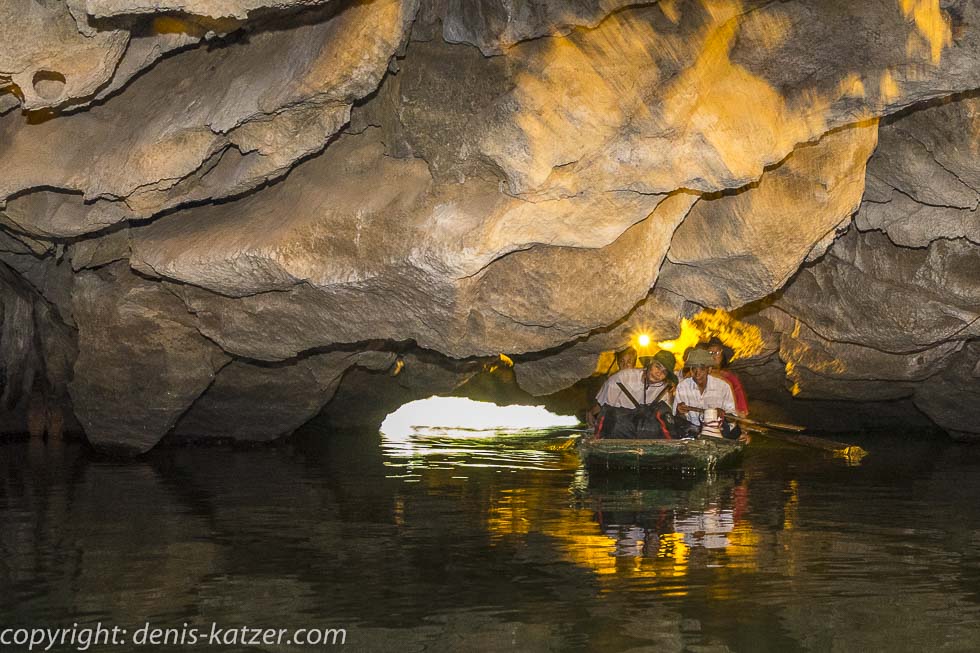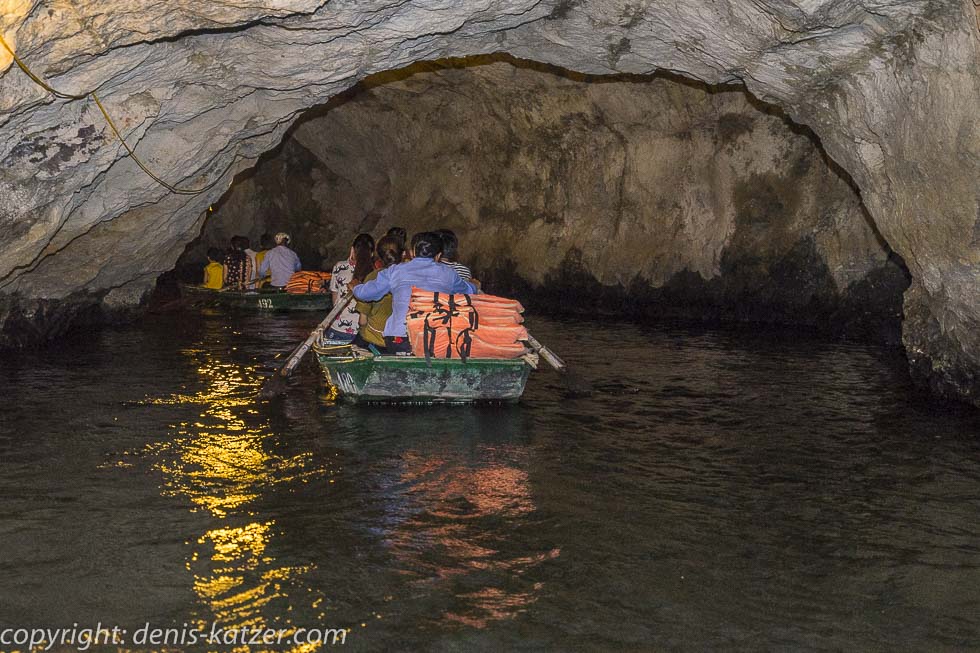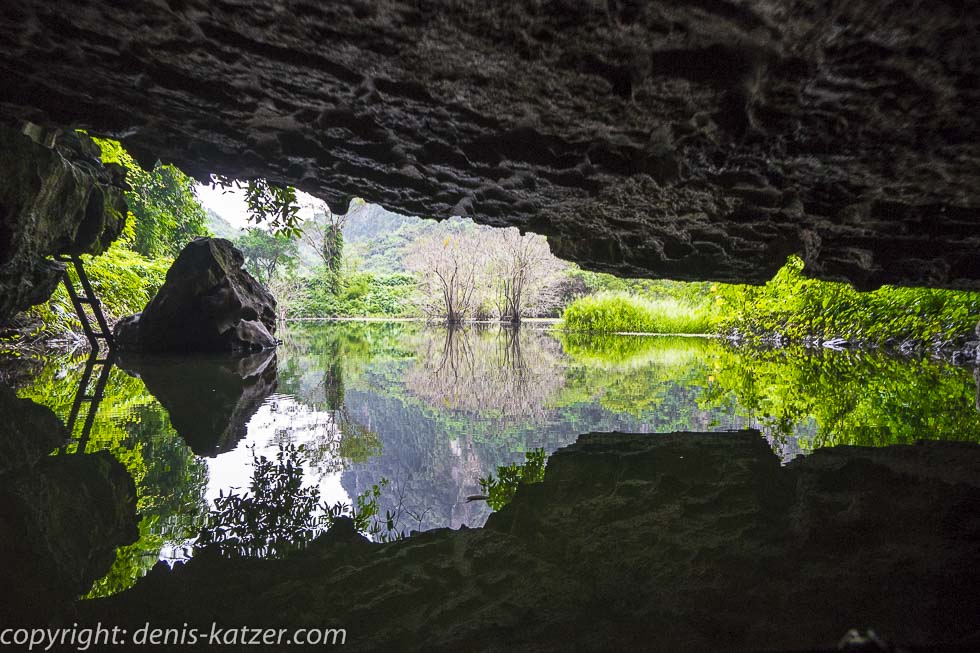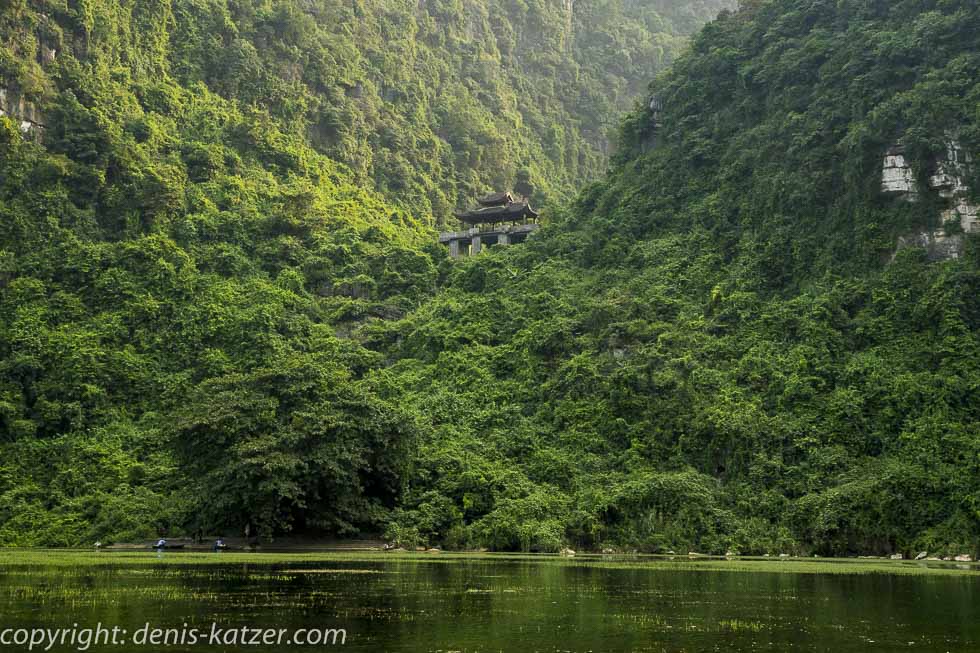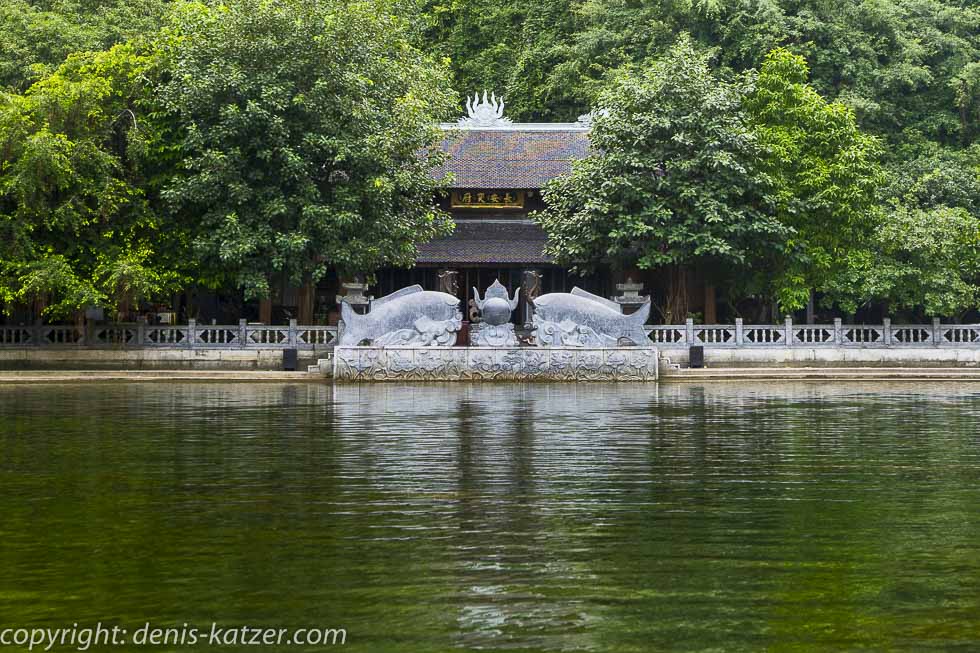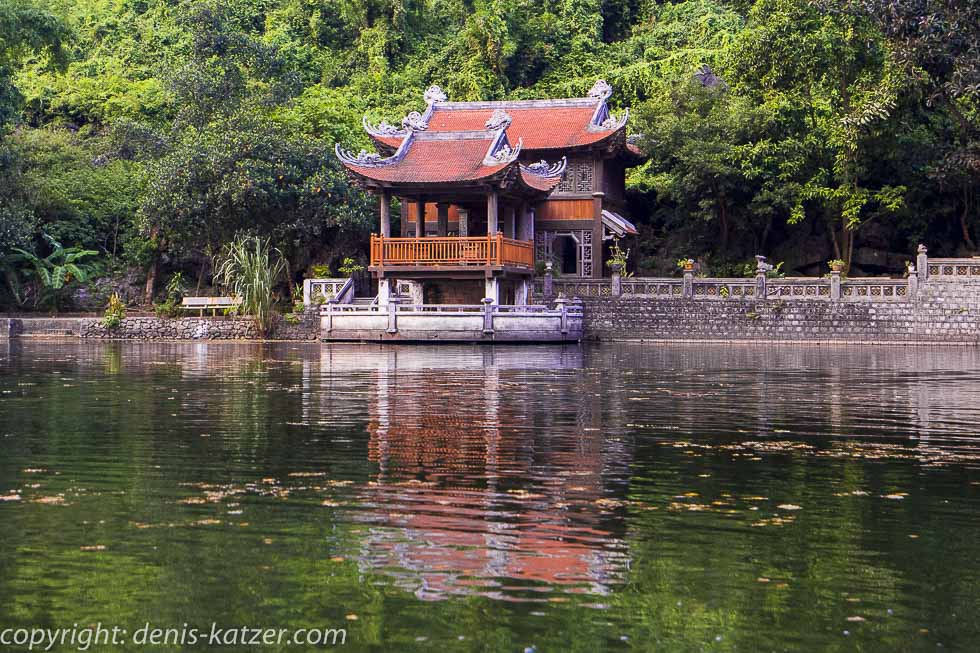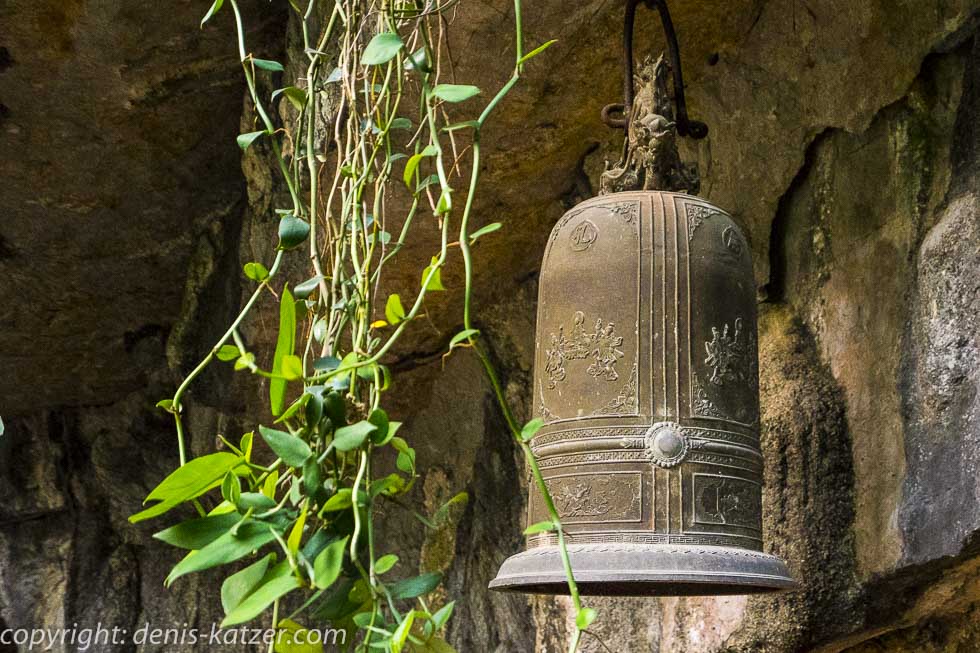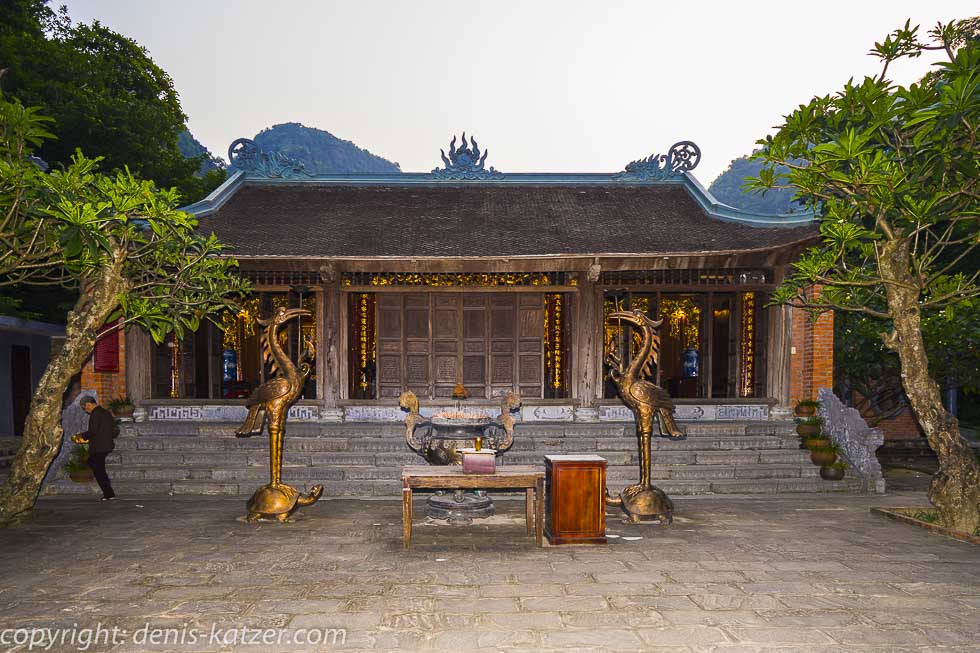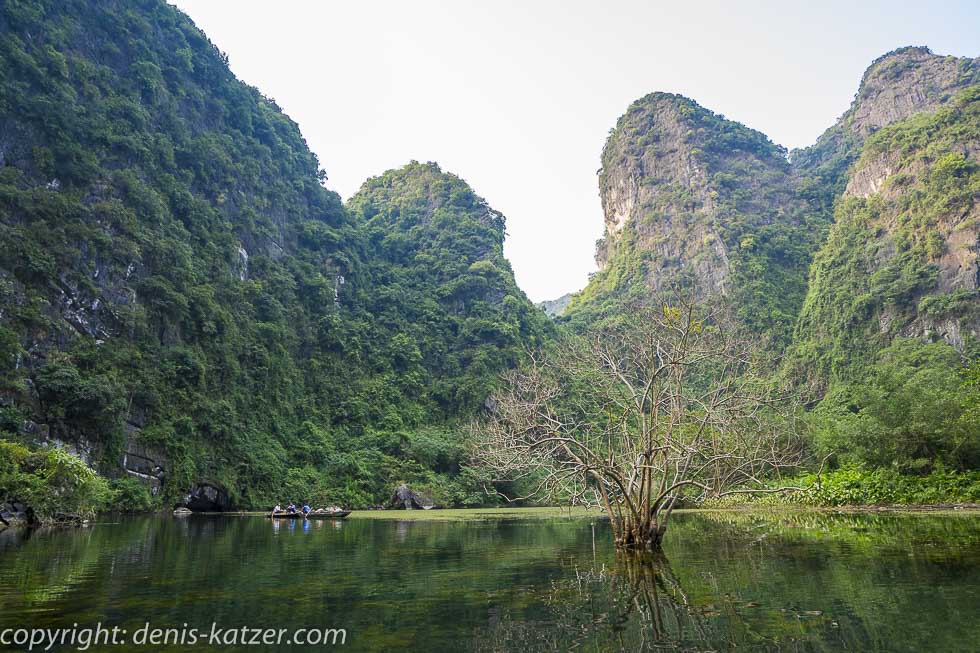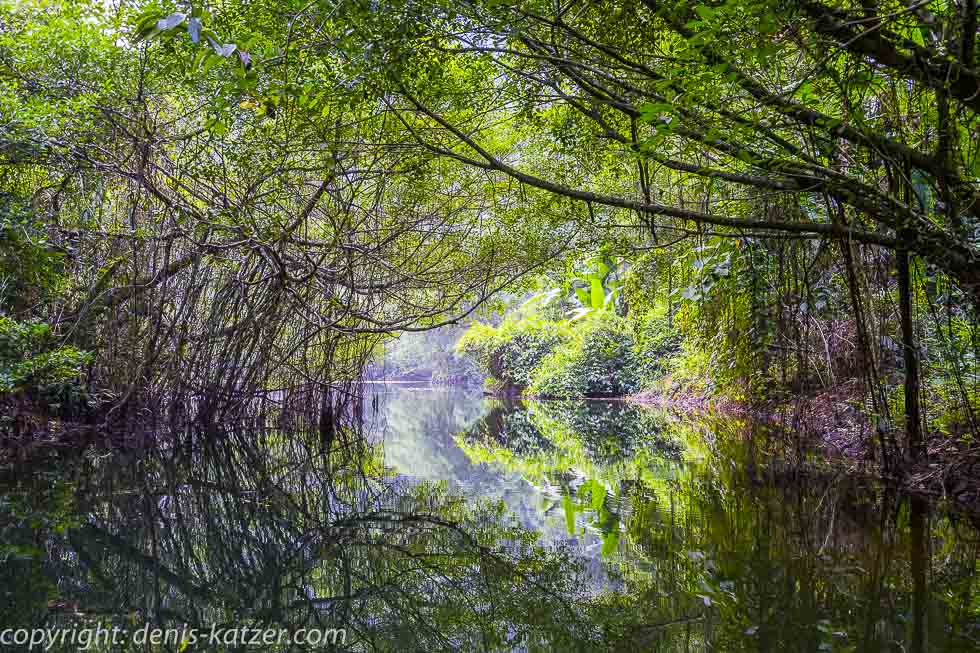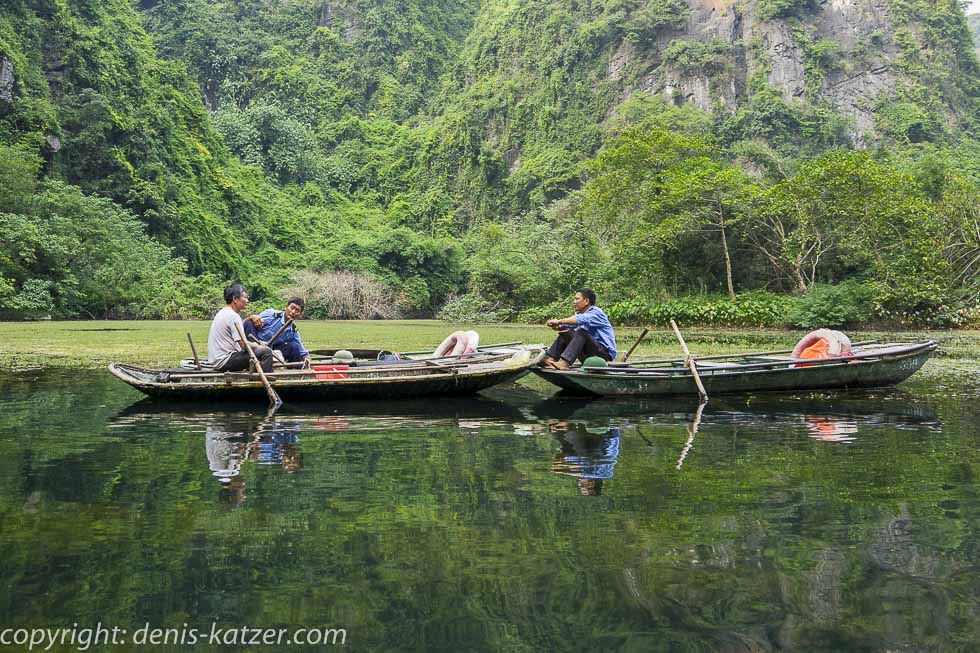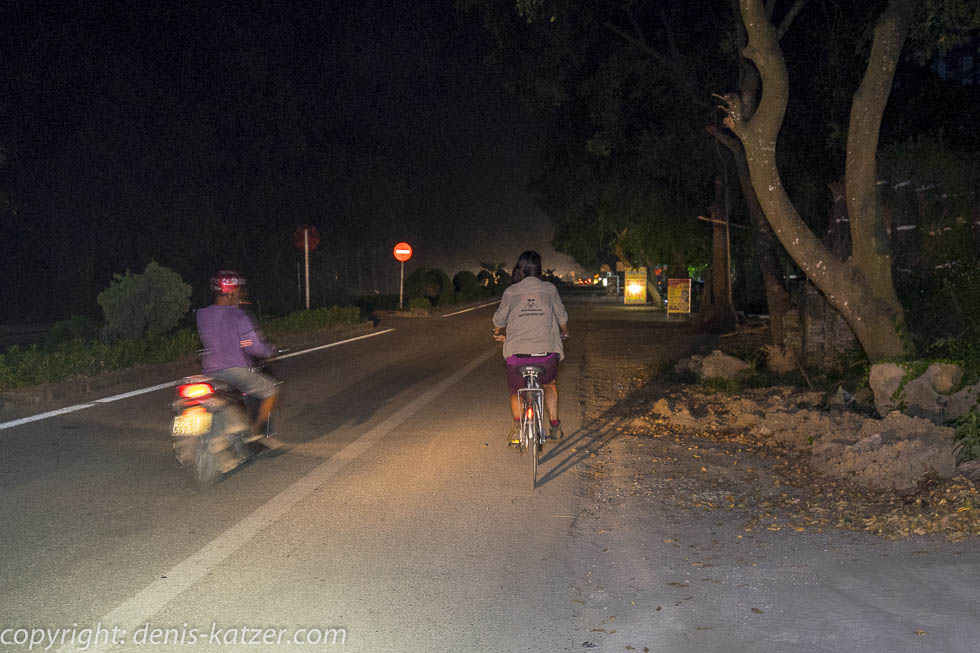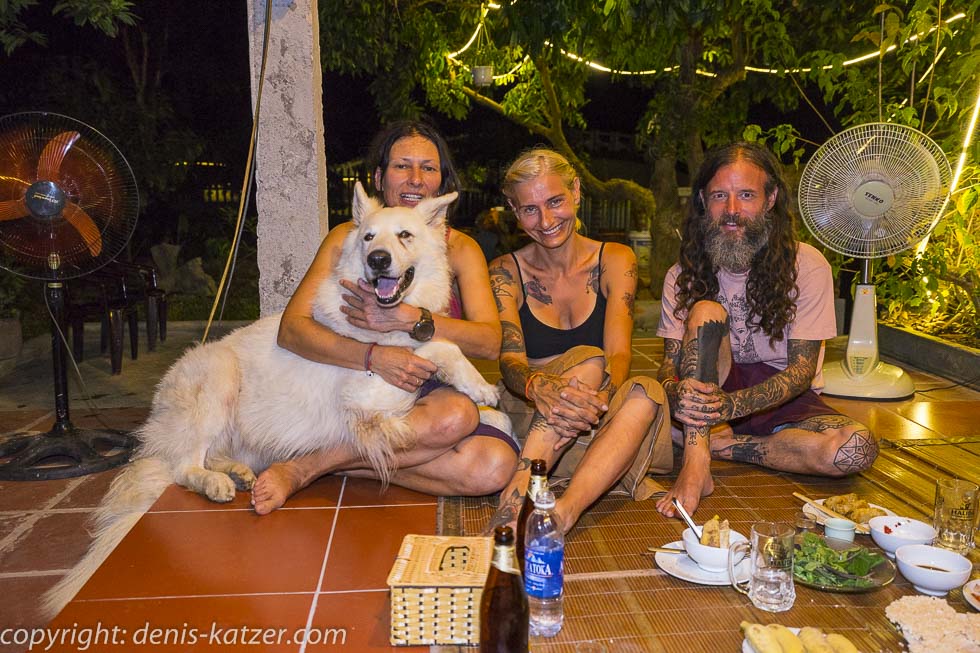
In the gorge of the rock face – To well-being
N 20°13'01.7'' E 105°55'58.9''
Date:
08.10.2016
Day: 470
Country:
Vietnam
Province:
Ninh Bình
Location:
Ninh Binh
Latitude N:
20°13’01.7”
Longitude E:
105°55’58.9”
Daily kilometers:
26 km
Total kilometers:
19,352 km
Soil condition:
Asphalt
Total altitude meters:
54.661 m
Sunrise:
05:48
Sunset:
5:39 pm
Temperature day max:
37°C
Temperature day min:
24°C
(Photos of the diary entry can be found at the end of the text).
“Huuuaa,” I yawn, stretching vigorously and looking up at the yellowed ceiling of our run-down little room. “I’d like to leave this dump and move into the little bungalow down by the river,” I say sleepily. “Do you think it’s worth it for the few days?” Tanja replies, also yawning. “Absolutely. The two European tourists who sat on the river steps last night and waved to us as we passed by in the rowing boat looked really happy. I’ll go there right away and ask if there’s still a room available.
An hour later, we pack our bags and move. “Wow, a beautiful bungalow. So big, so clean and really cozy,” Tanja enthuses. “A place to stay a few days longer,” I agree. The young owner of the two brand new bungalows, which only opened yesterday, introduces himself to us. “Because my name is difficult for foreigners to pronounce, just call me Johnny,” he grins and immediately wants to serve us breakfast. Tanja and I look at each other. “Yes, I’d love to”, we reply in high spirits, settle down on the comfortable wooden chairs right on the banks of the Ngo Dong River and enjoy the early morning. Motivated by the rowing boats gliding past with their smiling tourist passengers, we decide to visit the caves of Trang An this afternoon to go on a second rowing boat tour. “You’re welcome to use our bikes,” Johnny suggests. In the afternoon, I check the bikes from Johnny’s homestay. They are in a catastrophic state and, like many rental bikes in Vietnam, the frame size is far too small for us Europeans. Nevertheless, we get into the saddle. For the first few meters, I feel like I’m biting my own knees with every turn of the pedals. After just a few kilometers, our bums start to ache. Although we pedal along without any load and the road has no elevation gain, it is more strenuous than getting our heavily laden e-bikes up a pass. “That’s when you realize what fantastic bikes we have!” I exclaim. “Too bad we left them in Mai Chau,” Tanja replies. “You know why, but when we get back and our new visas are stamped in our passports, you can explore the 2,000-kilometer Ho Chi Minh Highway all the way to South Vietnam on our superbikes.” “Can’t wait,” Tanja’s enthusiastic words fly through the hot afternoon air.
At around 38 degrees in the shade, we struggle along the dusty country road and reach the jetty at Trang An, just 13 kilometers away, after just under an hour. “Damn touristy here,” I say, a little disappointed. Ticket office buildings designed for mass tourism rise up in front of us. As we are still in the low season, we don’t have to queue and are immediately allowed to take a seat in one of the rowing boats with two Vietnamese tourists. “Do you think they would accept Ajaci here?” asks Tanja. “I don’t think so, and if we had, we would certainly have had to buy two extra tickets for 150,000 dong (€6.20) each.” “Good thing we had him with us yesterday.”
As on yesterday’s boat tour in Tam Coc, the karst mountains cast a spell over us. Water lilies line the shore. Fish flit through the green underwater world. As we were one of the last rowing boats to cast off this afternoon, there are not too many visitors on the water. We glide past a small boat in which two newlyweds are being immortalized by a photographer. The dreamlike landscape backdrop is perfect for such shots. A rock face overgrown with jungle towers into the sky in front of us. At its lower end, just above the water level, a black slit appears which, with a little imagination, looks like the opening of a mouth. There, the river disappears into the darkness. “The first cave,” I say. Then we disappear into the throat of the rough karst rock. A few ceiling lamps give the river cave a diffuse light. “Watch out!” Tanja warns me at the last second as I’m looking through the viewfinder of my camera. I pull my head in at lightning speed. “Phew, that was close,” I say. “It’s enough if you fall off a bamboo bridge on your bike, you don’t have to hit your head on a stalactite,” echoed Tanja’s warning from the wet cave walls. “Very funny,” I reply somewhat sourly, because every time I lift the camera, my still very sore shoulder reminds me of the completely unnecessary accident. Suddenly, another massive stalactite appears. To avoid banging my injured shoulder against it, I push off with my right hand, to the horror of our captain. A mistake that I realize only fractions of a second later as our Khan clatters against the dark rock face. “Sorry,” I say meekly. “Hi, hi, hi,” is the response from the woman, who doesn’t seem to hold a grudge. Some of the cave ceilings are so low that we have to lie almost flat on the boat to avoid hurting ourselves. “Anyone suffering from claustrophobia will die in here,” I whisper to Tanja. Then the river cave spits us out again into a picturesque, almost enchanted-looking, mystical mountain landscape overgrown with tropical forest. Temples and pagoda roofs peek out again and again between the dense jungle vegetation. Old temple bells, arched bridges, stone and bronze figures shimmer in the evening light. What a fabulously beautiful facet of our Mother Earth, which was named a UNESCO World Heritage natural and cultural monument by the World Heritage Committee in Doha in 2014 for good reason. As we enter the next steaming river cave and discover countless large clay pots on an underground bank, some of which are standing in shallow water or on rough stones, it is not difficult to imagine that the earliest traces of human life in Vietnam date back 300,000 to 500,000 years. “Fascinating,” I hear Tanja say. “Yes, absolutely. I would love to travel back in time here, because this region was home to the Dieu culture 30,000 years ago or the Hoa Binh culture 16,000 BC, whose Stone Age people lived in caves or under rock overhangs. What I wouldn’t give to be able to go hunting with these primitive people for a while or to see how they made and used stone tools,” I reminisce. “I didn’t know Vietnam had such an ancient history.” “Hm, the roots of many peoples are ancient, although of course there was no Vietnam back then as it looks today. It was only formed through many wars and was still a prefecture of the Chinese in 111 BC, for example.” “So it was still part of China at that time?” “Yes, the first Vietnamese state was established in 938. After that, the Chinese repeatedly tried to bring the neighboring country under their control. For example, in 1400, when the Chinese Hồ dynasty replaced the Vietnamese Trần dynasty (1225 to 1400) and there was another brief period of Chinese rule under the Ming. These are certainly reasons why the Vietnamese are not particularly fond of their power-hungry neighbor.”
Tock, tock, tock, the oars of the Vietnamese woman hit the sheet metal outer wall of our boat. The disappearing daylight becomes increasingly diffuse. The water surface of the river lies before us like a mirror, reflecting the bamboo forests and giant trees. A fish jumps cheekily out of its element, only to quickly dive back into the water. The croaking of a few frogs sitting on the nearby floating water lily pads drifts over to us. Tock, tock, tock, the oars beat softly against the tinny outer wall as the darkness settles over the karst mountains and us. We listen to the sounds in silence and are glad to have undertaken this further rowing trip into the Otherworld.
Back on our rickety bikes, we set off on the return journey in complete darkness. It’s a good thing we packed a headlamp. “It’s best if you ride ahead. Then you move in the beam of the headlamp. The trucks and cars will definitely see you that way,” I suggest. “And what about you? Who lights you up?” “No problem. I’ll stay close to your rear tire. That way we form a unit. Just don’t brake unexpectedly.”
We reach Johnny’s Bungalows unscathed and tired. “Oh, it’s great to have you back. We’re celebrating the opening of our two bungalows today and would love to invite you. Are you coming?” “Gladly”, we reply, park the bikes, take a shower and, as is customary in Vietnam, sit down cross-legged on the floor with Johnny’s family. Next to us, we welcome the couple Ursula and Jevin from Holland, who are our first guests at this tiny resort. Our hosts have spread a raffia mat on the freshly swept floor, which serves as a kind of blanket. A wide variety of Vietnamese dishes are draped on top. In the center is a pot on a hot plate in which something indefinable is bubbling away. “Enjoy your meal,” Johnny opens the Vietnamese feast. A lot of beer and rice wine flows. “Chúc sức khỏe!” John’s father shouts, fills my glass with rice wine and invites me to drink. “Chúc sức khỏe!”, I shout as custom dictates and shove the stuff down my throat. As soon as the clear liquid burns down my throat, Johnny’s uncle calls out: “Chúc sức khỏe!” “Chúc sức khỏe!”, I reply and raise the refilled glass to my lips. “Chúc sức khỏe!” Johnny’s brother now asks me to share the hospitality with him. “Chúc sức khỏe!” I agree. “Chúc sức khỏe!” now comes from Johnny’s throat. “Sorry, but I want to see more of the area tomorrow,” I try to say no. “Tomorrow is tomorrow and today is today. Chúc sức khỏe!” Johnny repeats. “Chúc sức khỏe!”, I slur a little and know that I’ll regret this drinking binge tomorrow at the latest…
If you would like to find out more about our adventures, you can find our books under this link.
The live coverage is supported by the companies Gesat GmbH: www.gesat.com and roda computer GmbH http://roda-computer.com/ The satellite telephone Explorer 300 from Gesat and the rugged notebook Pegasus RP9 from Roda are the pillars of the transmission. Pegasus RP9 from Roda are the pillars of the transmission.
